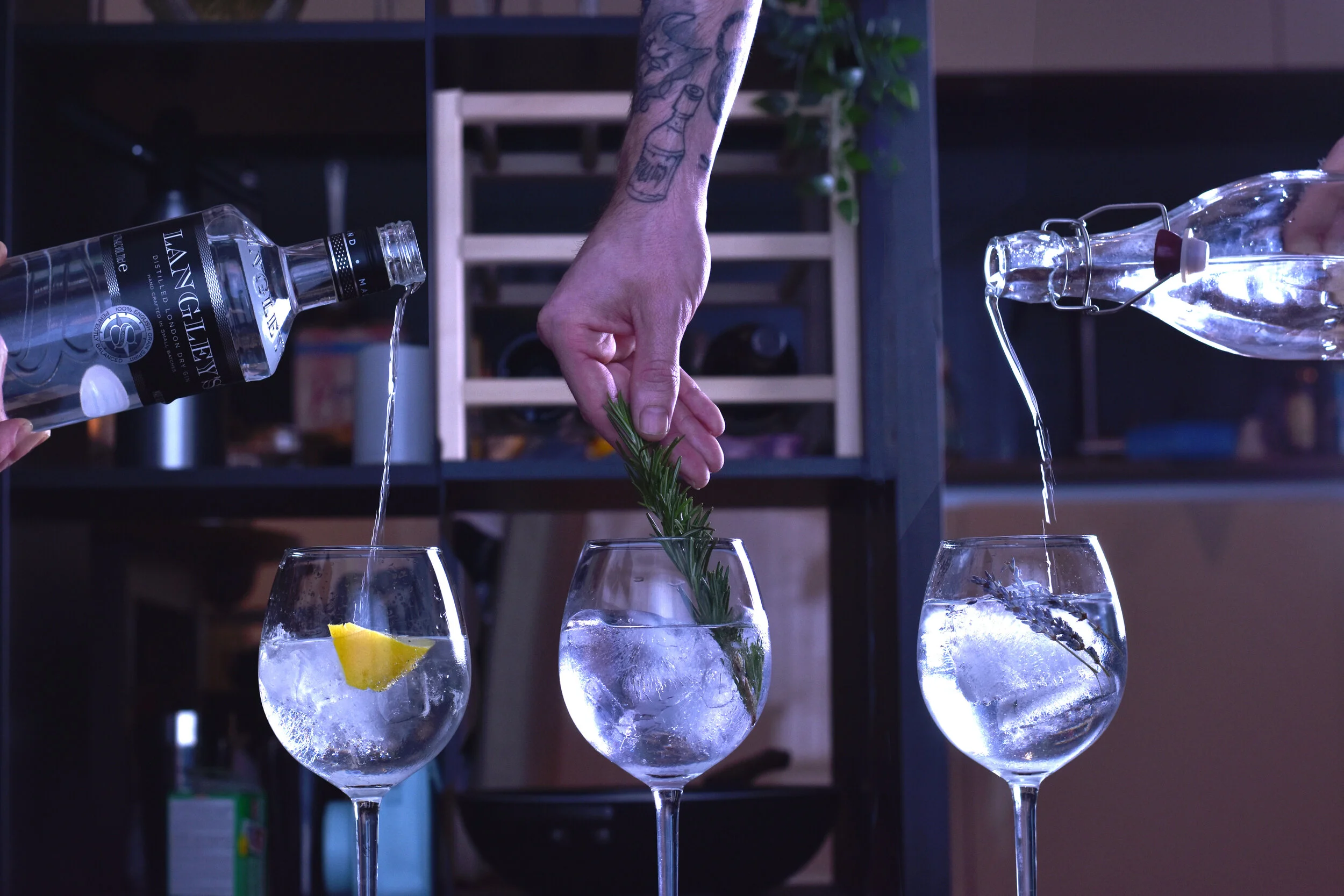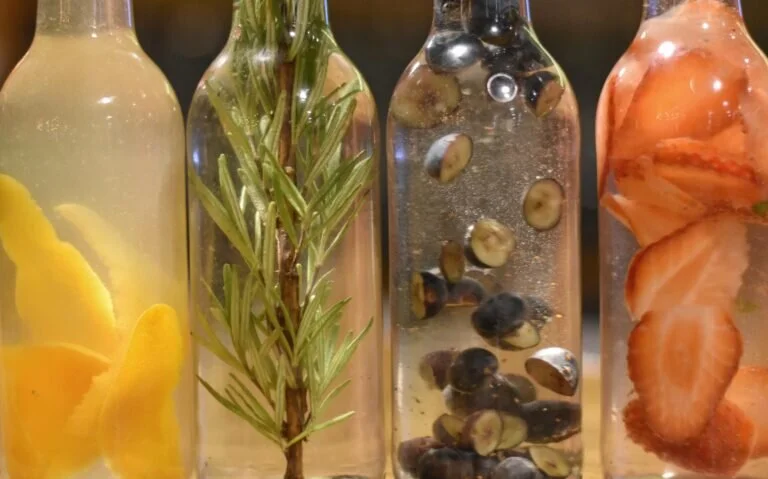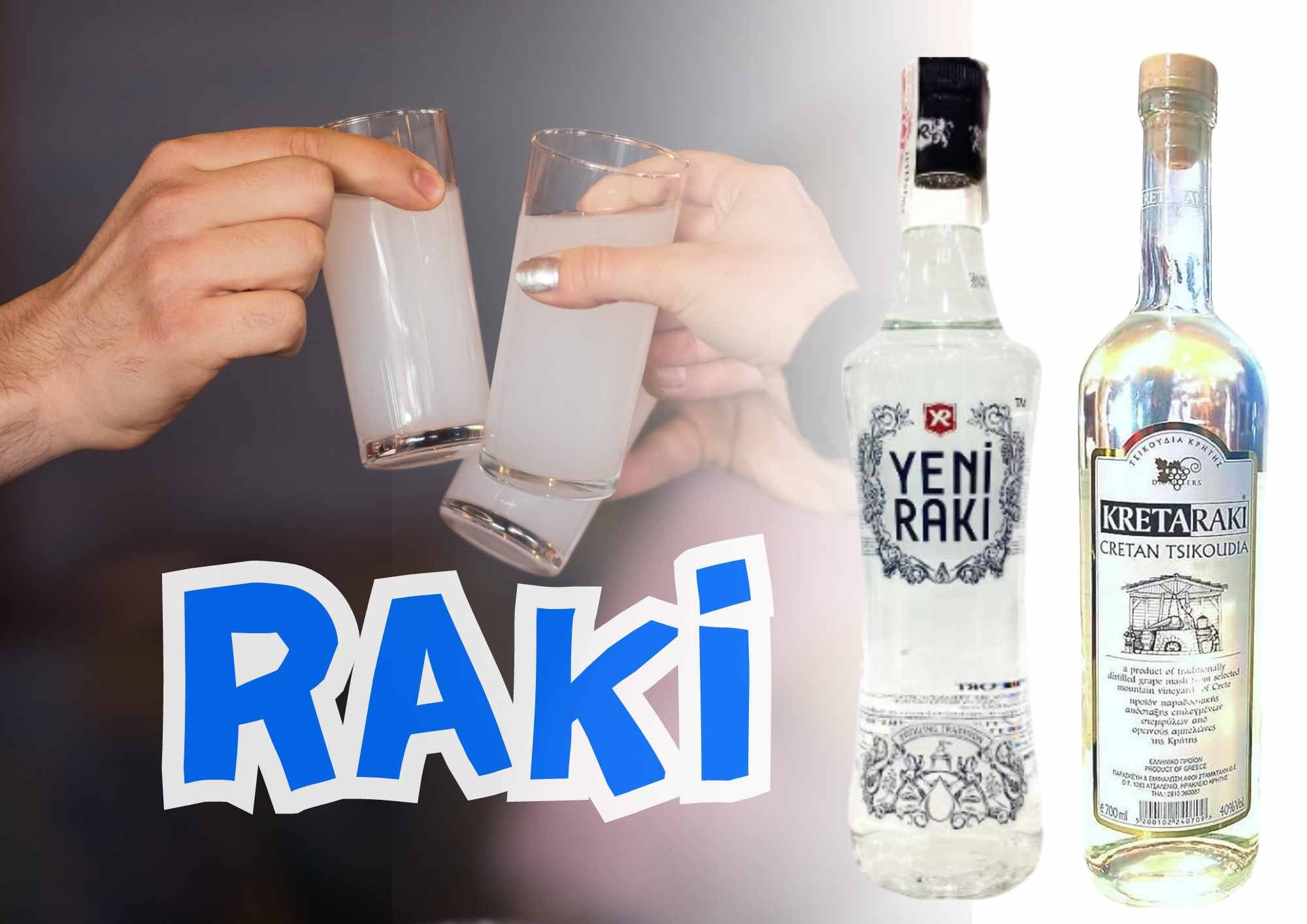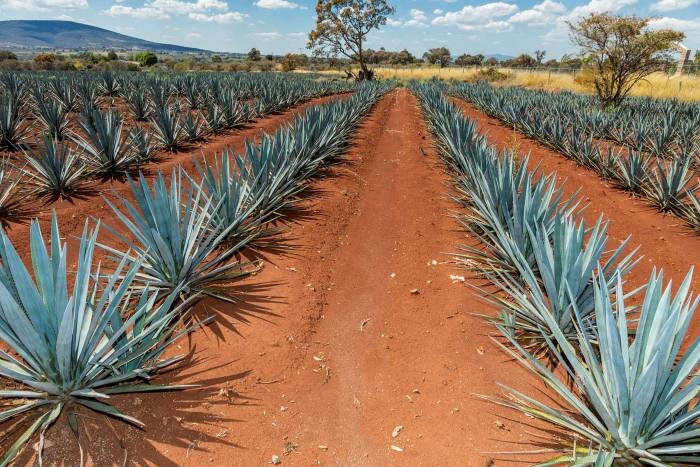What Is Gin? The Ultimate Guide to The Different Types of Gin
What is Gin? A Comprehensive Guide to Different Styles of Gin
Gin has quickly became the UK’s favourite spirit. We have rapidly came into our second gin craze, and given that it’s still going strong and has no indication of slowing. I thought I’d compile a ultimate guide on what is Gin. From its origins, it’s styles, how its made, the different types, gin’s history and timeline and of course, the big question: What is Gin.
So, if you’re thinking about a career in gin distilling, or perhaps you want to know more about what’s in your gin and tonic. Maybe you just want some facts to seem more knowledgeable on the UK’s most trendy drink. This is the gin guide for you.
How gin is made
When producing spirits, the sugars and starch you use in the first stage of fermentation is what makes the spirit. in the production of Tequila, it’s the agave you use to ferment which gives the end distilled product a peppery, vegetal disposition. the taste and aroma you get from bourbon differs from that of scotch because of the different ingredients used in the fermentation stage. Even with Vodka. A spirit which prides itself on having no flavour pays homage to the cereal, sugar or starch which its created from.
Gin however, is the exception. Gin acquires all its flavour from the ingredients they use to flavour it after its fermented. To make gin, all you need is a neutral spirit. Which is a pure, unflavoured spirit. sometimes referred to as a GNS (grain-neutral spirit) and similar to what Vodka is.
So the basic answer to the big question of what is gin, is that gin is flavored Vodka.
These neutral spirits are distilled using a column still. the reason behind this is that when using a pot still, you can only make a spirit of around 85% abv (alcohol by volume) If a spirit is 85% alcohol that means that its 15% other stuff, such as water and various residual impurities left over from fermentation. in spirits like whisky, brandy and rum, its these "impurities” that give the product character. But in gin it’s the flavours added after that give it character. So, a clean starting spirit is required. column stills will produce a spirit over 95% ABV meaning little character remains, the spirit can be deemed as a neutral spirit.
Add water to this neutral spirit and you get vodka. After you have your neutral spirit you then add your flavours. The main one being Juniper. No matter how many flavours you use to make gin juniper must be the dominate flavour. juniper is an evergreen shrub or small tree which bears berry-like cones, which have the flavour profile of pine, fruit, citrusy grass and peppery. basically, when you drink gin straight, that’s the taste of juniper berries. the flavours used in gin are called botanical’s. in effect, it essentially makes gin a flavoured Vodka. Which is why quite a few Vodka distilleries will also produce a range of gins. Or vice versa. There are 3 distinct methods to adding these botanical’s.
Method 1 - Maceration
This is the simplest method. It’s also the common method for making liqueurs. For this method the Botanical’s are steeped in the spirit to extract their flavours. Motion, heat and pressure can be used to increase the rate of extraction. Motion is as simple as shaking a bottle in which something is being infused every few hours. off course, big Gin distilleries are not using small bottles to infuse their neutral spirit, they will have large revolving tanks.
Heating helps breaks open the botanical’s cells, allowing the alcohol to extract the flavours more easily, whilst pressure forces the alcohol into the botanical’s being infused. This method extracts both flavour and colour. Because most Gin distillers want a clear spirit, after the maceration process the product is then distilled.
Method 2 - Re-distillation
In this method botanical’s will be infused in 1 of 2 ways. Either, the botanical’s will be added to the neutral spirit, which is then distilled. During distillation the vapours which are released from the maceration will pick up the flavours from the botanical’s without changing the colour, or the second way, which is somewhat similar, is to hang a basket full of botanical’s above the neutral spirit, so as the neutral spirit is distilled the vapours pass through the botanical’s picking up the flavour. whichever way you use, they both end with a crystal clear flavoured product.
If that doesn’t make sense to you, think of Gin making like making a cup of tea. During the first method (Maceration) the teabag (which would be filled with ingredients to flavour gin, botanical’s) are steeped in hot water (that being the neutral spirit) which then infuses it with flavour. Much like making a cup of tea.
If you imagine what would happen if instead of putting the tea bag in the cup, you hung it above the cup, so the boiling water evaporates and travels through the hovering teabag extracting the flavours. Then you collected that water vapour and tasted it. Well that would be the second method. re-distillation.
Method three - Shelf compounded flavors
Method three is to use shelf compounded flavours. this is the easiest way of doing it. it’s basically, buying a neutral spirit already distilled (Basically buying vodka) then buying extracts of flavours and adding it to your spirit to make your gin. A lot like making a cocktail. There’s nothing wrong with this, however, it is the cheaper option. There’s no hard work gone into these type of gins and you get less control over your gins subtle characteristics. Other gin distilleries view them as glorified flavoured vodka. although some products will use a combination of these methods, such as Hendricks, which uses re-distillation but then adds a dash of cucumber extract after distillation.
What is Gin made from?
Botanical’s are basically the ingredients that add flavour to gin. There are thousands of gins using thousands of varieties of these botanical’s. From strawberries in pink gin, to cucumber in gins such as Hendricks.
Choosing specific botanical’s for gin is a complex science. They don’t just add flavour to gin. They also contribute to the gin’s aroma, its look and the mouthfeel. All things important to crafting a great gin. With gin botanical’s. You may choose to add something for its flavour, or for its binding properties. Just because a gin has a certain botanical, doesn’t mean you will be able to taste it within the gin.
Take liquorice for example, Liquorice is one of the most popular botanical’s in gin, it’s used in thousands of gin’s. Personally, I hate the taste of liquorice but love the taste of gin. Why is that? Because liquorice is added for other reasons then just flavour. If you took it out, it may not affect the flavour. However, it would affect the mouth-feel and sweetness of the gin.
Most popular Gin Botanical’s explained
Below are the most popular botanical’s used in gin. What they are and why they're used.
Juniper
Juniper is the most popular botanical in gin, it’s what makes gin. The word gin is derived from the word juniper. The only rule in making gin is that juniper has to be the main flavour. Although there are no regulations in place to test this.
It comes in the form of a berry and has a flavour of pine. Basically, the flavour of gin is the flavour of juniper.
Coriander
All of the coriander plant is edible, but in gin, it's the seeds we want to flavour our gin. Coriander seeds have a complex taste, they're a little spicy and a little citrusy.
The citrusy flavour is what we want when using coriander seeds in gin. It’s the second most popular botanical used in gin, after juniper berries.
Angelica root
Angelica root has an earthy taste to it. It’s mainly used in gin to marry other botanical’s together. It helps give a pleasant mouthfeel to gin, as well as for lengthening and substance.
Angelica also works as a binding agent for the other flavours in the gin. Some gin distilleries will use the angelica seed or flower, but it's the root that's most popular.
Orris root
Orris root comes from the iris flower and looks similar to ginger. Orris root is very perfumed in character. Much like angelica root, orris root acts as a binding agent, to help blend aromas and flavours within the gin.
The flavour of orris root is mixed between earthy, woody, floral and sweet violet. It's the floral flavours we want when making gin. As Well as binding together other ingredients and giving gin it's mouthfeel, the same as Angelica root.
It’s what orris root does to the aroma that it's praised for. Orris root helps enhance a gin's aroma. Giving gin a much more pungent, long lasting smell. Because of the effect orris root has on aroma and binding. It’s also used a lot in perfume.
Cardamom
Cardamom comes in the form of a small pod found in an aromatic plant which grows in India. These pods contain tiny black or green seeds. The green seeds are the most popular and widely used of the two. Due to their delicate spicy and citrusy flavour. They're highly aromatic and a little goes a long way.
Liquorice
Liquorice has a bitter sweet flavour that's similar to anise. Most of us have tried liquorice in the form of sweets. It’s one of them flavours that you either love or hate.
In gin it does two things. Firstly it gives the gin a viscosity in texture and secondly, it gives the gin a sweetness, softening and rounding of its flavours.
Cassia
Cassia is a member of the cinnamon family and is sometimes referred to as “Chinese cinnamon.” It's a bark that comes from trees grown in China, Madagascar and Vietnam. The bark is harvested, rolled into quills and dried. Cassia bark is a little sweeter than cinnamon. It’s flavour lies somewhere between liquorice and cinnamon.
Lemon
Lemon, as we know, is a citrus fruit. It's the peels we use for distilling gin rather than the flesh of the lemon. The peels are what hold all the lemons essential oils. Aswell as adding an obvious citrusy flavour to gin, Lemon peels also add a freshness and brightness to the gin.
Orange
As with the lemons, it’s the peel of the orange used in gin rather than the flesh, due to the oils in the peels. Much like the lemon peels, orange adds a citrusy note to gin.
Different distilleries will use different types of orange. From bitter to sweet. Often Spanish oranges are used and as well as the sweetness and citrus notes, Orange peels add a gentle orange character to gin.
Cinnamon
Cinnamon comes from Sri lanka and is used to balance gin by adding a spicy note. Having Cassia bark alongside cinnamon will create a bridge of flavours between the cinnamon and liquorice.
Different Types of Gin
Their are many types of gin, but the different types of gin can almost always be places in 1 of 5 Gin styles. Below are all the 5 gin styles explained which once understand, explains basically every one of the different types of Gin.
Genever
Genever is the Mother of gin. It’s what gin evolved from. The guidelines for making genever are vague, so the process of making it differs from one distillery to the next. a bottle of genever will either be labelled "Oude" meaning old or "Jonge" meaning young/new.
Genever is a predecessor to the style of gin that we know as London Dry Gin. Traditionally, the base of Genever had a high percentage of Malt Wine (15%-50%), resulting in a spirit that had similar weight on the palate to wine and malty notes similar to whiskey, and an herbal component that is common with gin. This is the style of Genever that we known as Oude, meaning that it is made in the old style.
A newer style of Genever, Jonge, has a much lower malt wine content (up to 15%) which results in a much lighter style of Genever. With both styles, Oude and Jonge, the spirits can contain sugar, adding to the richness and weight on the palate. Juniper still plays a dominate role in Genever as well as other botanical’s and citrus.
16th-century Dutch pharmacists sold a medicine made of barley wine or barley spirit. The medicine was rough tasting, and instead of making it palatable with a spoonful of sugar, the pharmacists instead relied on Holland's thriving spice trade. They started blending the medicine with juniper berries and other spices. This was the origins of genever and its descendent, gin.
By the laws of the European Union, genever can be made in only a few areas: the Netherlands, Belgium, and parts of Germany and France. But that’s it. Genever translates as juniper. The name was giving to describe a drink tasting of juniper. By the law standards, genever doesn’t even have to be alcoholic to be named genever. Just to taste like juniper.
Old Tom
Old Tom is the oldest style of English gin still in production. Generally, Old Tom tends to be a much sweeter style of Gin, either through the addition of sugar and/or using sweet botanical’s. Originally the sugar was added to mask the horrible flavour from using cheap ingredients. Once Distillers started improving their Gin making they begin to add less sugar which is how London Dry Gin eventually came about.
Old Tom Gin is often referred to as Gin’s missing link. Somewhere between Genevers harsh malty flavours and London Dry’s Spicy, soft flavours. Old Tom is tricky to describe, because there aren’t any clear rules on how to make it. Other than being a juniper forward spirit you can pretty much do whatever you like.
You can add sugar or not, age it or not. add whatever flavours you want. You could take a bottle of Vodka, infuse it with juniper and whatever else you fancied. Stick it in a bottle and call it Old Tom and no one could argue that it wasn’t. Much like many spirits, Finding the origins of how it got its unusual name is difficult.
There are a lot of different stories but no solid proof. In Stanley Clisby Arthurs 1937 book "Famous New Orleans Drinks and How to Mix ‘Em," he claims the name comes from England when an old tom cat fell into a vat of gin.
Distiller Joseph Boord claimed the name came from a man named Tom who had put in a good many years at Boord’s distillery. Hayman’s who have been distilling Old Tom Gin since 1870 reports that back in 1736, one Captain Dudley Bradstreet lived in London and had a stock of gin. Bradstreet hung a sign depicting a painted cat in the window of his property and let it be known that “doses of sweet mother’s ruin (Gin) could be had at the address.” Under the cat’s paw sign was a slot and a lead pipe, which was attached to a funnel inside the House, Customers placed their money in the slot and duly received their gin. Bradstreet’s idea was soon copied all over London. People would stand outside houses, call ‘puss’ and when the voice within said ‘mew,’ they would know that they could buy bootleg gin inside. Very soon Old Tom became an affectionate nickname for gin. by the mid-1800s gin was inextricably linked with the image of a cat.
Old tom cat sign.
the very first trademark for gin, registered in 1849, was a picture of a cat on a barrel.
London dry
This is the most popular style of Gin today and is what most Gin drinkers think of when they think of Gin. A common mistake with this style of Gin Is that it must be made in London, but unlike Scotch or Cognac, London dry Gin can be made anywhere in the world.
London dry Gin became popular in London shortly after the column still was invented. The purer spirit that the column still offered made a cleaner Gin, which was good enough to be sold unsweetened, hence the "dry" part. (it’s good to note here that in the confusing world of alcohol, dry doesn’t mean dry. It means the opposite of sweet.)
London dry Gin follows the same rules as distilled Gin, the only exception is that London dry Gin must be flavoured exclusively with distilled natural botanical’s. No additional flavourings can be added after the distillation process. Nothing except neutral spirit, water and 0.1g of sugar per litre can be added.
Plymouth Gin
Unlike London dry Gin, Plymouth Gin MUST be made in Plymouth, which is a tiny city on the south coast of Devon, England. there is but one brand of Plymouth gin named "Plymouth Gin" creative name, right? who could have guessed that one?
Plymouth Gin is the only Distillery in the UK with geographical indication. Its slightly less dry than the much more common London Dry Gin and has more of an earthy feel and a lot more fruit forward flavours. Plymouth Gin was very popular among the British Navy in the late 18th century and was used in the first recorded recipe for a Dry Martini in the Savoy cocktail book.
However, in 2014, Pernod Ricard who own the brand Plymouth gin released a statement “We have decided to withdraw our support of the protected geographic indication for Plymouth gin” You may find it strange that Plymouth would reject there geographical indication, but with gin laws changing and craft gin on the rise. Having GI in Plymouth would just create more competitors the the brand.
New World Gin
These gins tend to put less emphasis on juniper and more emphasis on other aromatics. Such as Hendricks. more and more Gins are being made like this to give them more individuality and character.
Pink Gin
Pink gin use to be a cocktail that consisted of gin and angostura bitters. A delicious hard-hitting tipple. Now however, pink gin is referred to as any gin that’s been infused to become pink. This could be from the likes of strawberries, raspberries, rhubarb etc. As long as that gin’s blush, then it’s pink gin.
We can pretty much give credit for the pink gin boom to two London dry gin giants. Gordon’s and Beefeater. In the summer of 2017, Gordon’s released its Pink gin, infused with strawberries and raspberries. Shortly after in April of 2018, Beefeater released it’s own pink gin infused with strawberries. Due to the massive market control these gin brands have, it soon took of and what seemed like every other gin brand was releasing its own pink gin expression.
Gin timeline - The history of Gin
To understand what gin is and how the different styles of gin first came to be, it helps if we take a look at the history and timeline of gin. Starting with it’s creation back in the 1560s.
1560’s
Juniper spirits are seen as tonics to help cleanse the liver and kidneys. Juniper distillates start emerging from Holland and Belgium.
1572
Professor Sylvius De Bouve is credited with creating what is now referred to as genever- a neutral distilled spirit flavored with juniper. He was a renowned scholar, chemist and alchemist from the Netherlands.
1575
Bols distillery is established in Amsterdam and started to commercialise genever. Bols is still going strong today making it the oldest distilled spirits company
1585
English soldiers were sent by Queen Elizabeth 1 of England to help the dutch fight against philip of spain and their Spanish catholic rulers.
In 1618 the low countries became a battlefield again until 1648. This was named the “Thirty year war” English troops were given genever from the dutch to help them with the courage to run into battle. Hence the phrase “Dutch Courage” was born
1689
William of Orange from Holland becomes King William III of England. He started banning French imports including trendy Brandy. Leaving genever to fill the void.
1694
The English tonnage act. This act allowed anyone who wanted to distil spirits, to do so by posting a public notice giving at least ten days of their intention to start distilling. Beer became heavily taxed, gin became cheaper. Driving people to drink more gin.
1714
First recorded use of the word “gin”. It was used in the works “The fable of the bees or private vices, publick benefits” and stated “The infamous liquor, the name of which derived from juniper berries in dutch, is now, by frequent use… from a word middling length shrunk into a monosyllable, intoxicating gin” Basically meaning. English people love to shorten a word. So genever became gennie, which became gen, which is now gin.
1720’s - 1760’s | The gin craze
In these times, the death rate in London was higher than the birth rate. Low quality gin is being produced by the gallons and drank just as quickly. Before this time, gin was seen as a drink for the higher class. However, due to how cheap it became, it quickly became a drink of low quality. Street vendors would sell cheap gin from carts and backstreet componders used lethal ingredients such as turpentine and sulphuric acid to flavour their “gin”.
During this time, as many as 75% of babies died before reaching the age of five. Woman addicted to gin would neglect their babies or quiet them by giving them gin. Women seem to of abused gin more then men, giving it nicknames such as “Ladies delight” and “Madam Genever”
The most popular nickname given to gin was “Mother Ruin”
During this time, the government introduced gin acts. These laws where made to fight back against the gin craze, there were 8 Gin acts in total, but each time, people found ways around them to illegally create and sell gin. Giving birth to phrases such as “bathtub gin”
1830’s
Old tom is created. A style of gin sweetened to mask the horrible flavour of low quality gin.
1858
First quinine based tonic emerges. Soon after the Brits started mixing it with gin.
1862
Jerry Thomas publishes the first known bartending guide. Bartenders start mixing gin as the cocktail revolution takes the lead.
1920’s - 1930’s
American Prohibition ‘the Noble Experiment’ stops the sale of alcohol in America. Causing people to illegal ship gin into America and illegal distil gin. Just as gin starts getting a better rep, it slowly slips back into poor quality. After prohibition, much of the bartending culture was lost.
1990’s
A new cocktail revolution emerges. Bartending culture becomes popular again, thus better gin is created.
2000’s
At this time, there was a law that dated back to the 1800s stating the minimum size of a still had to be no less than 18 hectolitres. It was one of the gin acts created to stop the production of low quality gin. 18 hectolitres is massive. It takes a lot of money to start a distillery with a 18 hectolitre still. Because of this, we have a lack of craft, small batch gins.
Three men, William Chase who started the chase gin distillery. Fairfax Hall and Sam Galsworthy, Who with the help of drinks historian and master distillery Jared Brown, established the Sipsmith distillery. Challenged this law and managed to get it changed to allow for much smaller stills.
2010’s The second gin craze
Due to this change of law and thanks to the Chase and Sipsmith distilleries, it’s now created opportunities for people to distil craft gin. You no longer need hundreds of thousands of pounds to start a gin distillery. You can buy a small still for less than £500 and start selling your own gin.
This has seen a huge influx of gin distilleries who now have the ability to try new experimental gins. Instead of large companies following the same rules and recipes. Now we see an array of gins with different unique botanical’s and unique stories. Pink gins and other flavoured gins.
The gin craze today has seen gin out sell the likes of Vodka. And unlike the gin craze of the 1700s. It’s high quality gin that's being produced.
Gin lane
Hogarth's illustration of the evils of gin-drinking was published as part of a campaign against the uncontrolled production and sale of cheap gin.
Final thoughts
If you want to know how to take your gin and tonics to the next level. Then check out this post on how to grow your own gin and tonic garnishes
Gin Cocktails
Gin cocktails are some of the most popular cocktails in the world. And below are the must try cocktails for any gin lover which can be made with any of the different types of gin.
Gin is a category that has seen a massive change in recent years. It’s the nations favourite spirit, which is consistently evolving and changing with the times. There is a lot of room within the gin category for innovation. Who knows what gin style or gin trend will come next? only time will tell.
If you’ve found this guide helpful please feel free to comment below, or use the below buttons to share this gin guide. Thank you



























